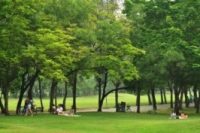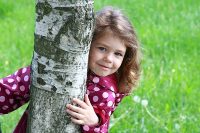Option 1: Use the Key Vocabulary: Level C student page to introduce or reinforce key terms used in this level. Refer to the Key Vocabulary: Level C teacher page for the correct responses.
Option 2: Deepen students’ learning beyond the classroom by sending them home with one of the Home Connections student pages to do with their family (see Home Connections below). Encourage students to share their home experiences with the class.
Option 3: Read aloud Underneath My Favorite Tree by M.L. Green (see Literature Connections below), and then invite students to create poems describing what they like about their adopted tree.
Option 4: Read My Favorite Tree: Terrific Trees of North America by Diane Iverson (see Literature Connections below), and then exchange pictures of the class’s adopted tree throughout the year with a class in another region to see how trees may differ in different places.
Option 5: After reading From Tree to Paper by Pam Marshall (see Literature Connections below), divide the class into pairs or small groups for a design challenge. Provide each group with 20 toothpicks and five pieces of paper and invite them to design a product with these materials.
Home Connections
Parents and families play an important role in supporting science learning. Home Connections offer suggestions for activities to do at home that build on students’ in-class learning.
Literature Connections
Pairing classroom instruction with fiction and nonfiction resources supports content comprehension, expands student creativity, and provides real-word context. These Literature Connections enhance the concepts explored in the Treemendous Science! activities.
| Activity | ||
|---|---|---|
| Engage: Tree Sort | 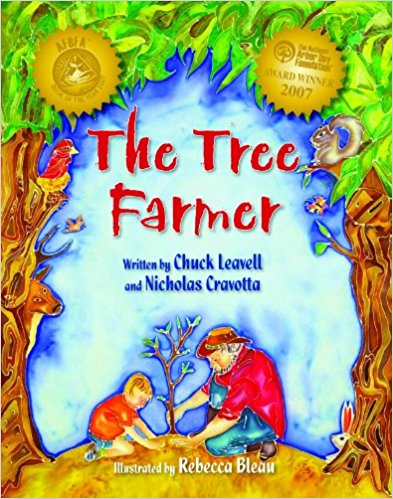 |
Leavell, Chuck and Nicholas Cravotta. The Tree Farmer. VSP Books. 2010. A grandson confronts his grandfather, a tree farmer, about how he can grow trees with so much love and care, only to cut them down. But as they walk together through the trees, they discover the majesty of the forest and enjoy the life journey of each tree. Grade 1–3. ISBN: 978-1893622166. |
| Engage: Tree Sort |  |
Marshall, Pam. From Tree to Paper. Lerner Classroom. 2013. Follow the journey of a tree from planting to paperback in this fascinating children’s book. Grades K–3. ISBN: 978-1467707978. |
| Engage: Tree Sort |  |
Mora, Pat. Pablo’s Tree. Simon & Schuster Books for Young Readers. 1994. In addition to giving us wood, paper, food, and other products, trees are invaluable assets to our communities. This book embraces new traditions and values, as well as exhibiting family relations that are warm and heartfelt. Grades PreK–3. ISBN: 978-0027674019. |
| Engage: Tree Sort | 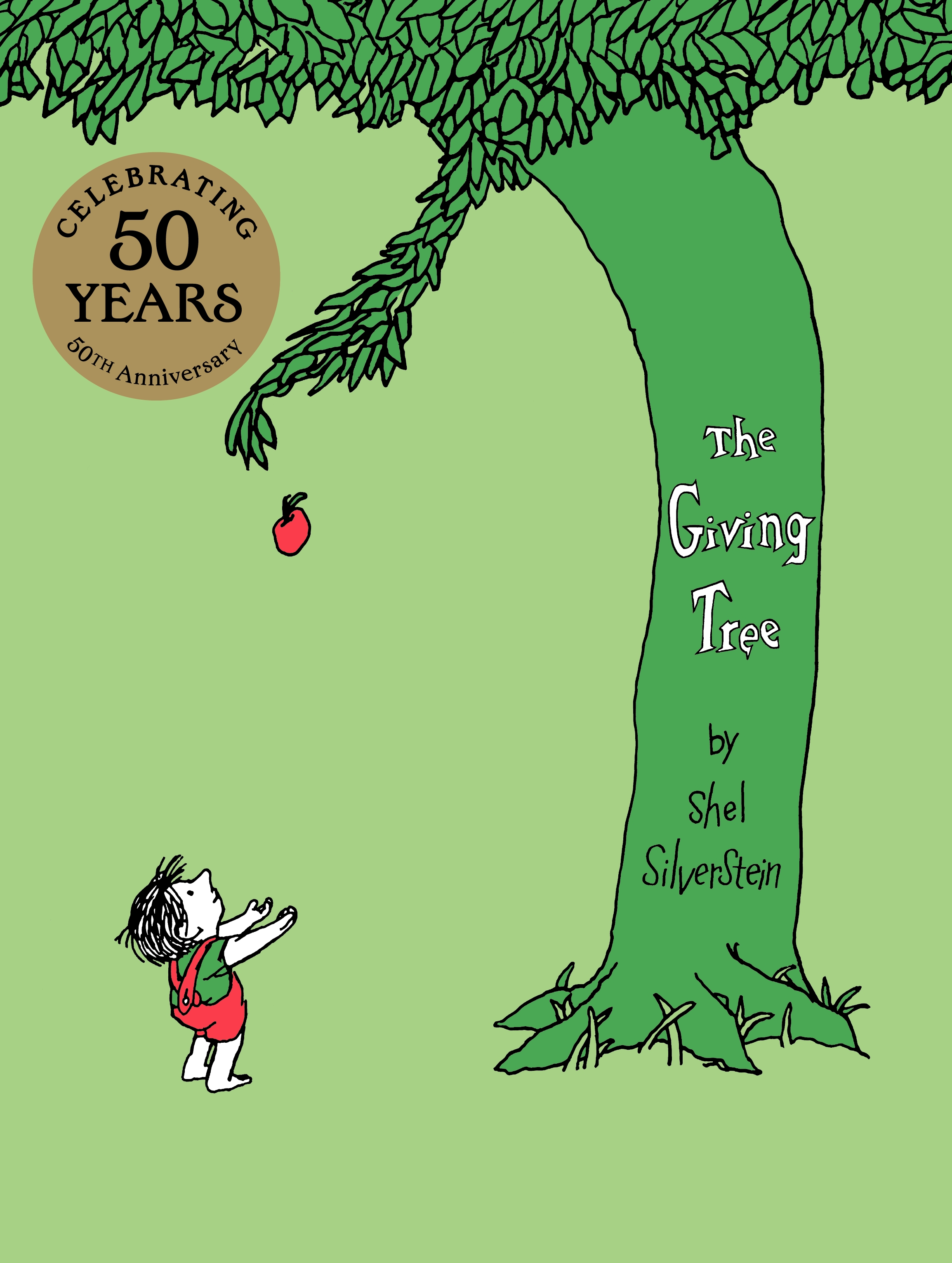 |
Silverstein, Shel. The Giving Tree. Harper & Row (1964). This classic children’s story tells the tale of a tree who loves a little boy. Grades K–2. ISBN: 978-0060256654. |
| 1: Adopt a Tree | 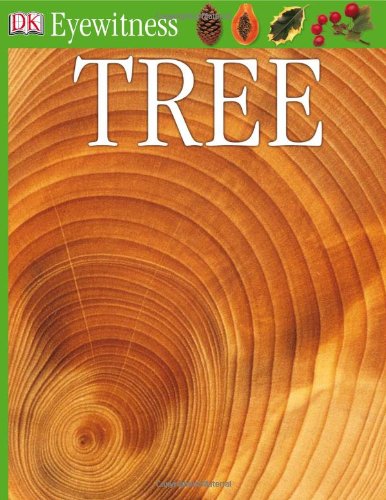 |
Burnie, David. Tree (Eyewitness Books Series). DK Children. 2005. Here is an original and exciting look at the fascinating world of trees. Real-life photographs of bark, leaves, flowers, cones, and seedlings offer a unique view of trees, from their leafy boughs to their roots beneath the soil. Grades 3–7. ISBN: 978-0756610937. |
| 1: Adopt a Tree |  |
Green, M.L. Underneath My Favorite Tree. PublishAmerica. 2008. Read along with this playful poem as Nadieya imagines all of her favorite things she would see underneath her beloved tree. Grades K–2. ISBN: 978-1604748581. |
| 1: Adopt a Tree | 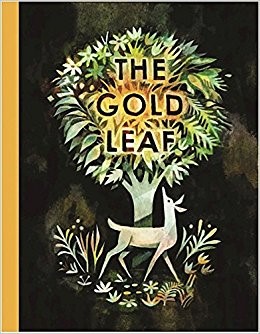 |
Hall, Kirsten. The Gold Leaf. Enchanted Lion Books. 2017. In the spring, among many shades of green, there is one gold leaf. Following the serial theft of this leaf, you will find nature’s wisdom. Grade PreK–3. ISBN: 978-1592702145. |
| 1: Adopt a Tree | 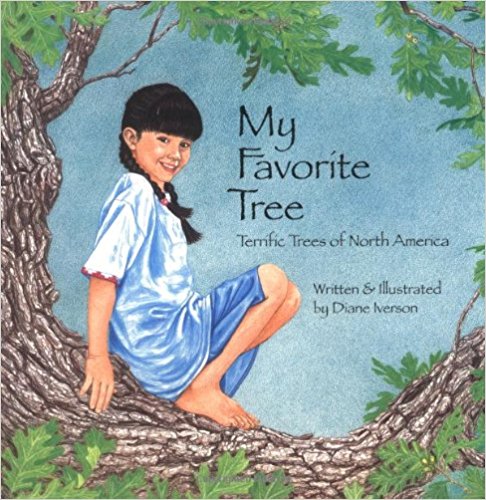 |
Iverson, Diane. My Favorite Tree: Terrific Trees of North America. Dawn Publications. 1999. Explore 27 of the major native North American trees, along with the food, shelter, and their importance to our heritage. Grades K–3. ISBN: 978-1883220938. |
| 1: Adopt a Tree | 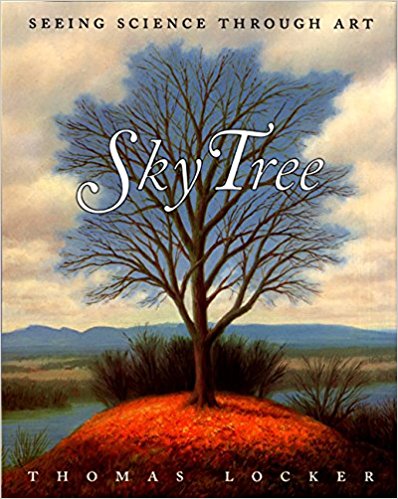 |
Locker, Thomas. Sky Tree: Seeing Science through Art. HarperCollins. 2001. Travel through the seasons and learn about the passage of time in nature in this beautifully illustrated book. Grades K–4. ISBN: 978-0064437509. |
| 1: Adopt a Tree | 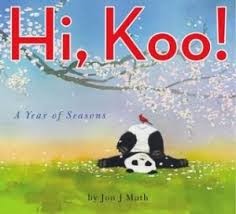 |
Muth, Jon J. Hi, Koo!: A Year of Seasons. Scholastic Press. 2014. Join a bear named Koo and two human siblings as they challenge readers to stretch their minds with 26 haikus about the four seasons. Starting with fall, readers of all ages can enjoy not only the fun and frivolous haikus, but also the changing color palette of Muth’s watercolor art as it follows the seasonal transformations. Grades PreK–3. ISBN: 978-0545166683. |
| 1: Adopt a Tree | 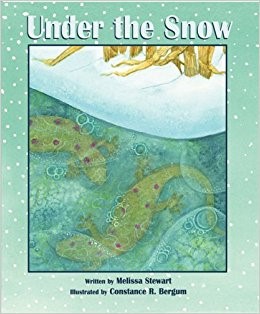 |
Stewart, Melissa. Under the Snow. Peachtree. 2009. Learn how snakes, salamanders, carp, beavers, and other animals spend their days during the winter months. Grades K–2. ISBN: 978-1561454938. |
| 1: Adopt a Tree | 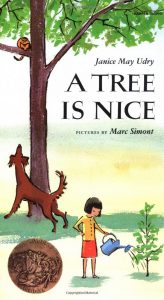 |
Udry, Janice May. A Tree is Nice. HarperCollins. 1987. This classic Caldecott Award–winning book teaches of the beauty of the everyday world and the many pleasures a tree provides. Grades K–3. ISBN: 978-0060261559. |
| 2: Get in Touch with Trees |  |
Gibbons, Gail. Tell Me, Tree: All About Trees for Kids. Little Brown. 2002. This book introduces students to the parts of a tree and their functions, the growth of trees, and the different types of trees. Followed by a discussion of how trees are useful to people, animals, and the environment, and directions for making a tree identification book. Grades PreK–3. ISBN: 978-0316309035. |
| 3: Trees as Habitats |  |
Brenner, Barbara. One Small Place in a Tree. Harper Collins. 2011. Stop, observe, and explore your natural world. If you look closely enough, you will surely find… one small place that is home for something. Grades 1–2. ISBN: 978-0688171803.
|
| 3: Trees as Habitats | 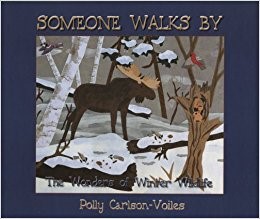 |
Carlson-Voiles, Polly. Someone Walks By: The Wonders of Winter Wildlife. Raven Productions. 2008. Take a walk through winter woods, and spot signs of animal life in a cold, snowy winter habitat. Grades K–2. ISBN: 978-0980104561.
|
| 3: Trees as Habitats | 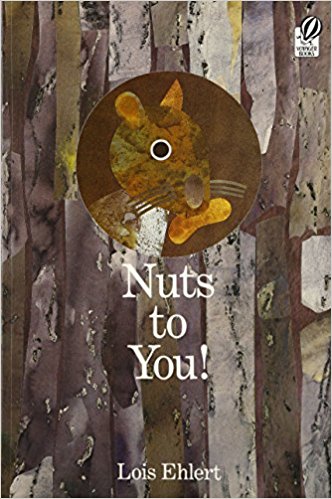 |
Ehlert, Lois. Nuts to You! HMH Books for Young Readers. 2004. Take a trip to the city, where a mischievous little squirrel’s adventures lead him around a birdfeeder and into an apartment. Grades PreK–3, ISBN: 978-0152050641. |
| 3: Trees as Habitats |  |
Hutchins, Pat. Good-Night, Owl! Little Simon. 1990. Sometimes it’s hard to be a “night owl.” Students will learn about all the creatures that make their home in a tree, as an owl tries to get a good “night’s” rest. Grades PreK–3. ISBN: 978-1481444248. |
| 3: Trees as Habitats | 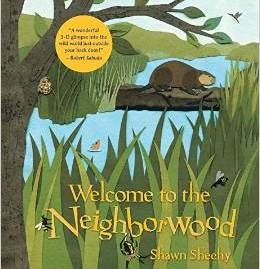 |
Sheehy, Shawn. Welcome to the Neighborwood. Candlewick. 2015. Learn about forest habitats and micro-communities as artist and author Shawn Sheehy takes readers from neighborhood to neighborhood. In this stunning pop-up book, he introduces readers to seven woodland animals and insects. Grades PreK–3. ISBN: 978-0763665944. |
| 3: Trees as Habitats | 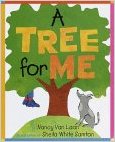 |
Van Laan, Nancy. A Tree For Me. Knopf Books for Young Readers. 2000. In this rhyming book, a child climbs five different trees looking for a place to hide. Each tree reveals an increasing number of animals already in residence until finally the perfect tree is found. Grades K–3. ISBN: 978-0679893844. |
| 4: Schoolyard Safari | 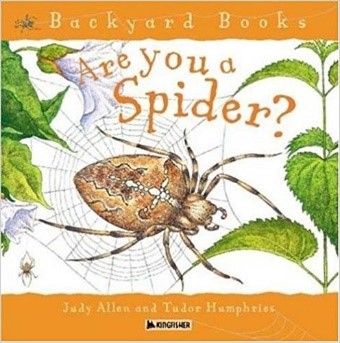 |
Allen, Judy. Are You a Spider? Kingfisher: Backyard Books. 2003. One of a series of titles that introduces readers to creatures they may find in their backyard or schoolyard. Others in the series include: Are You an Ant?, Are You a Butterfly?, Are You a Dragonfly?, Are You a Ladybug? and Are You a Snail?. Grades K–3. ISBN: 978-0753456095. |
| 4: Schoolyard Safari | 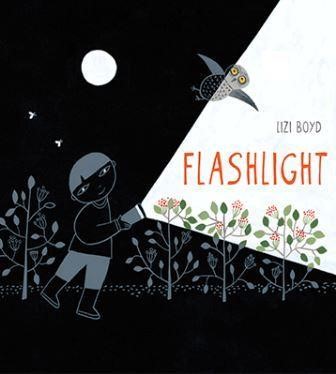 |
Boyd, Lizi. Flashlight. Chronicle Books. 2014. What happens when a little boy leaves the comfort and security of his tent to explore the unfamiliar and unpredictable environment that surrounds his camp… in the dark? Armed with only his flashlight, the main character of this book takes readers on a journey that is creative and exciting on multiple levels. Grades PreK–2. ISBN: 978-1452118949. |
| 4: Schoolyard Safari | 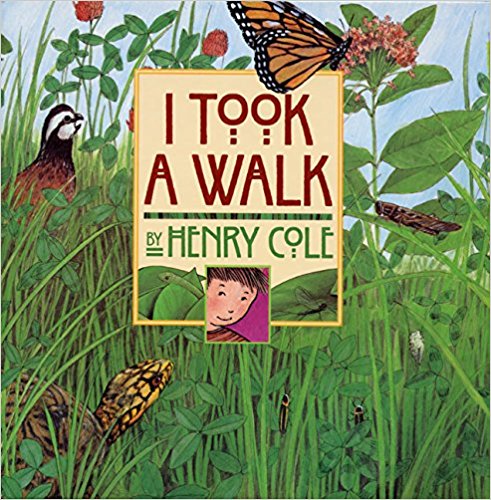 |
Cole, Henry. I Took a Walk. Greenwillow Books. 1998. In this story, students join in an adventure through the forest and discover just how many plants and animals call the forest their home. Foldout lists of animals, plants, and insects offer ideas for what students can look for on their own adventures. Grades K–4. ISBN: 978-0688151157. |
| 4: Schoolyard Safari | 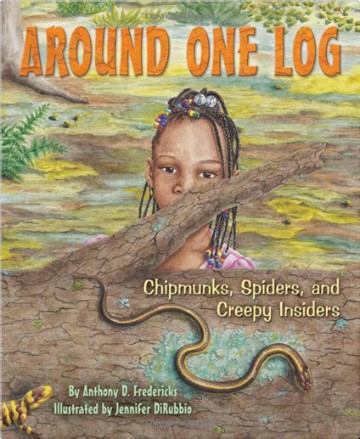 |
Fredericks, Anthony. Around One Log; Chipmunks, Spiders, and Creepy Insiders. Dawn Publications. 2012. Fun, rhyming verses provide a great introduction to common forest critters you can find in your own backyard, while also teaching young learners about forest cycles and decomposition. Grades K–2. ISBN: 978-1584691372. |
| 4: Schoolyard Safari | 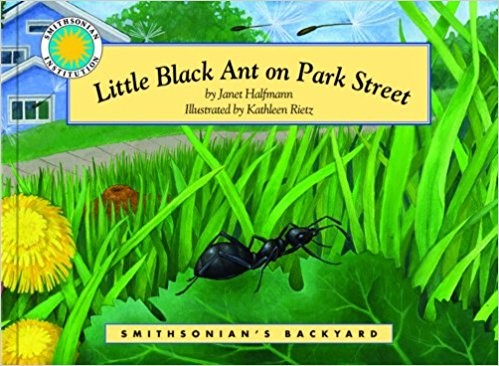 |
Halfmann, Janet. Little Black Ant on Park Street. Soundprint. 2009. From the perspective of a little black ant, learn about and explore the animals that live in an American backyard. Grades K–2. ISBN: 978-1607270034. |
| 4: Schoolyard Safari |  |
Lunis, Natalie. Life in Your Backyard. Newbridge Educational Publishing. 1996. Students discover that every backyard, vacant lot, and playground is a wildlife habitat filled with plants and animals to explore. Grades K–2. ISBN: 978-1567842234. |
| 4: Schoolyard Safari |  |
Morrison, Gordon. Nature in the Neighborhood. HMH Books for Young Readers. 2004. Take a stroll through the seasons with naturalist Gordon Morrison as he reveals plants and animals you might be able to find in your own neighborhood. Grades 1–5. ISBN: 978-0547015484. |
| 4: Schoolyard Safari | 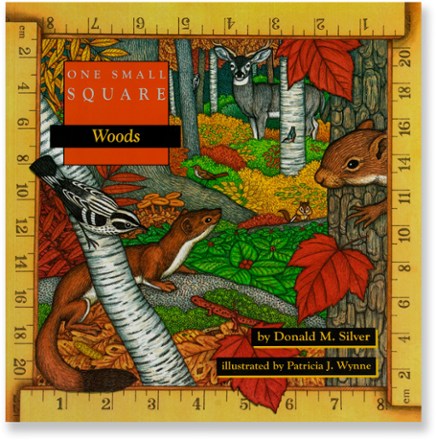 |
Silver, Donald M. One Small Square: Woods. McGraw-Hill Education. 1997. This book explains how to investigate the plant and animal life found in a small section of the woods. Grades 1–3. ISBN: 978-0070579330. |
| 5: Habitat Pen Pals |  |
Berkes, Marianne. Over in the Forest: Come and Take a Peek. Dawn Publications. 2012. Practice math and observation skills while also being introduced to the diverse woodland habitat. Grades 1–2. ISBN: 978-1584694601. |
| 5: Habitat Pen Pals | 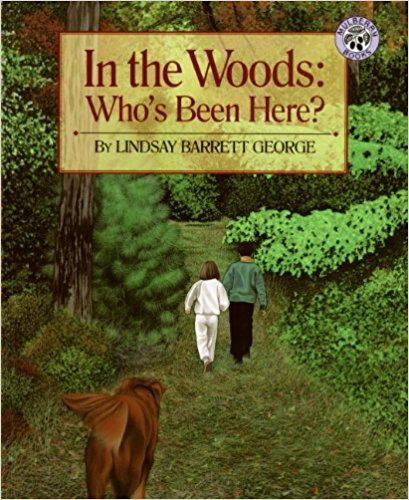 |
George, Lindsay Barrett. In the Woods: Who’s Been Here? Greenwillow Books. 1998. Siblings William and Cammy set off on a awalk through the autumn woods near their house. Although they don’t see any wildlife on their trek, they do observe traces of creatures’ activities—including a northern oriole’s nest, the remains of a red squirrel’s meal, a monarch butterfly’s cocoon, and a mud dauber’s home. Two of the examples involve predator–prey relationships that may upset very young listeners, but for most children this will be an excellent introduction to a walk in the woods. Grades K–3. ISBN: 978-0688161637. |
| 5: Habitat Pen Pals | 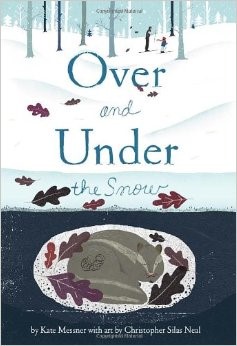 |
Messner, Kate. Over and Under the Snow. Chronicle Books. 2011. Learn about the subnivean (under snow pack) inhabitants and how they use this space for protection, food, and transportation. Make prior knowledge connections by comparing the subnivean zone to your own home: how are they alike and different? Grades PreK–4. ISBN: 978-0811867849. |

